Contrapposto, Contrapposto, Kontraposto, קונטרה פוסטו, Contrapost, Contrapposto, Kontrapost, Contrapposto, Контрапост, Kontrapost

yoyita.com
contemporary classical sculpture, Figurative nude sculpture, Escultura figurativa del desnudo, Www.türk figurative Skulptur, Escultura figurativa de nudismo, النحت عارية التصويرية, Фигурално голи скулптура, 비유적 누드 조각, Figire eskilti toutouni, Figurativní sochařství nahá, 比喻裸体雕塑, Figurative nøgen skulptur, Obrazové nahé sochárstvo, Figurativne golih kiparstvo, Kuvio nude kuvanveisto, Sculpture nue figurative, Εικονιστικού γυμνό γλυπτική, פיסול פיגורטיבי בעירום, uratieve naakt beeldhouwkunst, Ábrás Keller szobor, Scultura figurativa di nudo, 比喩的なヌード彫刻, Figurāla pliknis skulptūra, Vaizdinis nuogi skulptϋra, urative naken skulptur, Graficzny nude rzeźba, Sculptura nud figurativ, Фигуративные ню скульптуры, Figurativa naken skulptur, ประติมากรรมเปลือย figurative, Figüratif çıplak Heykel |
Kontrapost, Contrapposto, Contrapposto, Kontraposto, קונטרה פוסטו, Contrapost, Contrapposto, Kontrapost, Contrapposto, Контрапост, Kontrapost |
Send this page of Contrapposto to a friend
Contrapposto, Contrapposto, Kontraposto, קונטרה פוסטו, Contrapost, Contrapposto, Kontrapost, Contrapposto, Контрапост, Kontrapost

yoyita.com
Bust Sculpture • Relief Sculpture • Figurative Sculptures • Prehistoric sculpture • Nefertiti • Tutankhamen • Female in bed with Chihuahuas |
ContrappostoFigurative nude Sculpture IICelebrating the human form |
|
|
|
|
|
|
|
|
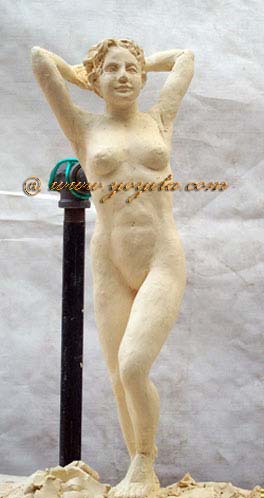 |
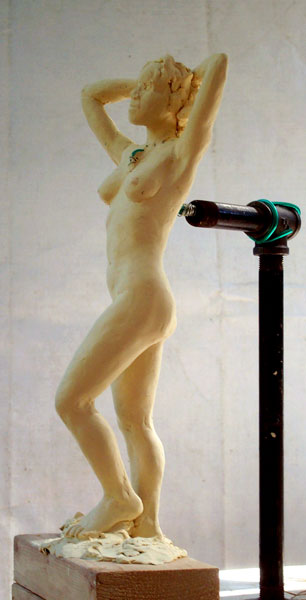 |
||||
Contrapposto Figurative Sculpture 15" by 10" by 10" |
Contrapposto | Klassischer Kontrapost Figurative Sculpture 15" by 10" by 10" |
||||
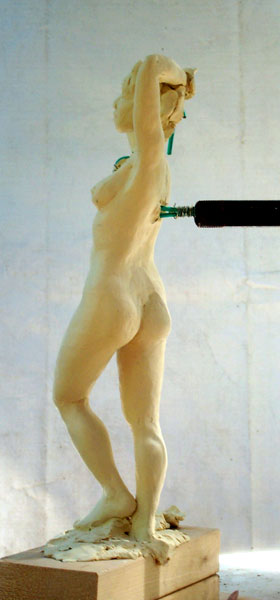 |
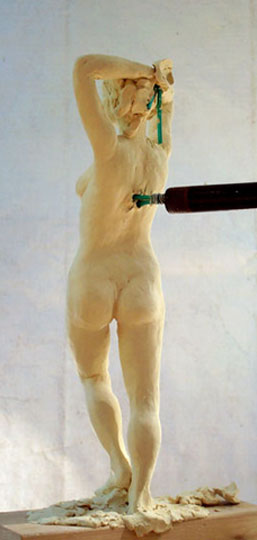 |
||||
|
|||||
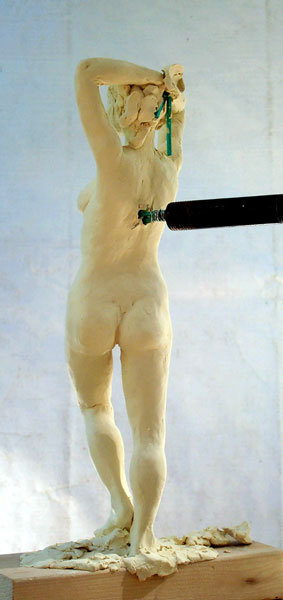 |
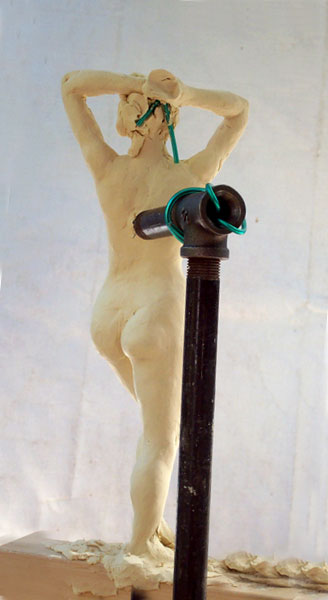 |
||||
Contrapposto |
|||||
| yoyita.com | |||||
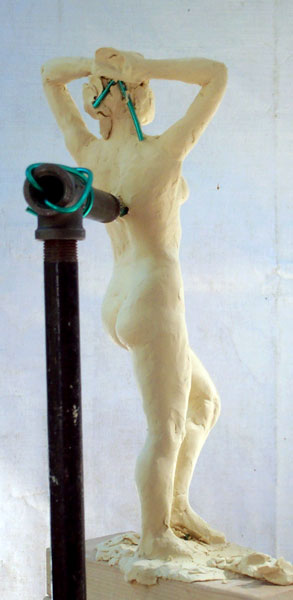 |
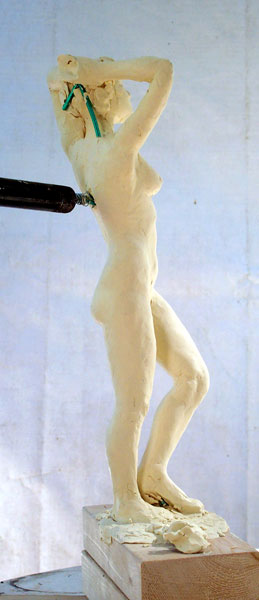 |
||||
| yoyita.com | |||||
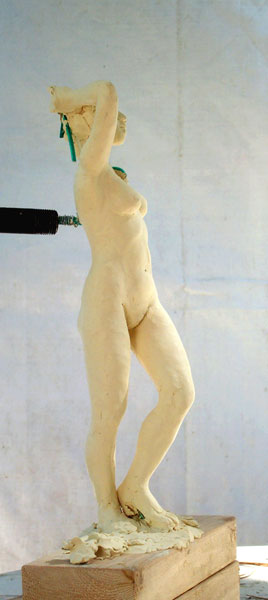 |
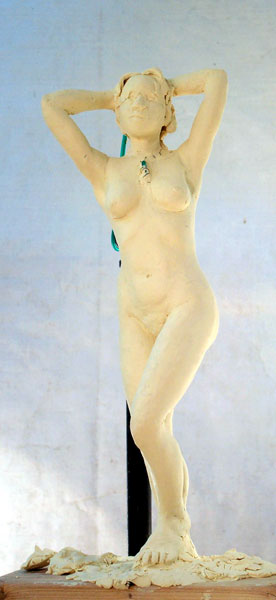 |
||||
| Contrapposto is the Italian word for "counterpoise", referring to an analytical sculptural technique in which the artist illustrates the natural counterbalance of the body through the bending of the hips in one direction and the legs in another direction. The weight is balanced on one foot. The term was coined during the Italian Renaissance, while the style itself is ancient. Classical Contrapost (or Classical Contrapposto) is a term most commonly used in the visual arts to describe a human figure standing so that its shoulders and arms twist off-axis from the hips and legs. This gives the figure a more relaxed and less stiff appearance. It can also encompass the tension as a figure changes from resting on a given leg to walking or running upon it (so-called ponderation). Contrapost has been used since the dawn of classical western sculpture. According to the canon of the Classical Greek Sculptor Polyclitus (Polykleitos) in the fourth century B.C., it is one the most important characteristics of his figurative works and those of his successors, Lysippos, Skopas, etc. The Polycletian statues for example Discophoros and Doryphoros are idealized athletic young men with the divine sense, and captured in contrapost. In these works, the pelvis is no longer axial with the vertical statue as in the archaic style of earlier Greek sculpture until the Ephebe-statue of Kritios ca. 490-480 B.C. The first civilization to use contrapposto was the ancient Greeks. Greek life-sized sculpture began in the Archaic period with statues of standing youths, kore (pl. korai) being female figures and kouros (pl. kouroi) male. These artworks were based on the ancient Egyptian model: very rigid and formal, with movement expressed only through one foot being placed slightly in front of the other. The first Greek statue to exhibit contrapposto is the famed Kritios Boy. Contrapposto soon became a defining element of Greek sculptural technique, culminating in the Canon of the Doryphoros ("spear-bearer"), which adopted extremely dynamic and sophisticated contrapposto. One of the major achievements of the Italian Renaissance was the re-discovery of contrapposto. Famous sculptures incorporating contrapposto include Michelangelo's David. Contrapposto was an extremely important sculptural development for it is the first time in Western art that the human body is used to express a psychological disposition. The balanced, harmonious pose of the Kritios Boy suggests a calm and relaxed state of mind, an evenness of temperament that is part of the ideal of man represented. From this point onwards Greek sculptors went on to explore how the body could convey the whole range of human experience, culminating in the desperate anguish and pathos of Laocoön and his Sons (1st century AD) in the Hellenistic period, (Now attributed to Michael Angelo). Unter dem klassischen Kontrapost (von ital. contrapposto Gegensatz) versteht man in der bildenden Kunst den Wechsel von Stand- und Spielbein einer menschlichen Figur zum Ausgleich der Gewichtsverhältnisse. Das Becken tritt dabei aus der senkrechten Körperachse. Der durch die daraus resultierende Gewichtsverlagerung einsetzende Hüftschwung mit der Schieflage des Beckens in der Balance ist ebenfalls symptomatisch für das Spiel mit Gegensätzen Ruhe Bewegung, Spannung Entspannung, Hebung Senkung, die letzten Endes zu einem homogenen Ausgleich führen. Der moderne Begriff der Ponderation beschreibt dabei vor allem die Unterscheidung von Stand- und Spielbein mit den dazugehörigen Folgen für den übrigen Körperbau (s.o.) Das Motiv des Kontrapost wurde erstmals von den antiken Bildhauern der klassisch-griechischen Kunst dargestellt und drückt zugleich Last und Unbeschwertheit, Ruhe und Bewegung sowie Gebundenheit und Freiheit des menschlichen Körpers aus. Das Motiv wurde später von den Künstlern der Renaissance aufgegriffen, unter ihnen an erster Stelle von Donatello und dann von Michelangelo. Seitdem wird es auch von Malern in ihren Gemälden verwendet. Contrapposto es un término italiano para designar la oposición armónica de las distintas partes del cuerpo de la figura humana, lo que proporciona cierto movimiento y contribuye a romper la ley de la frontalidad. Fue el escultor Policleto quien lo puso en práctica en sus obras antes citadas, influyendo mucho en las escultura del Renacimiento (por ejemplo, en el David de Donatello). Básicamente consiste en representar a la figura humana con una pierna ligeramente flexionada, con lo que la cadera del lado opuesto aparece más elevada, al igual que el hombro de ese mismo lado está a menor altura que el contrario, lo que da lugar a que la figura describa una ligera curva y contracurva (una S) en su recorrido vertical. El escultor griego del siglo IV a. C. Praxíteles practicó un contrapposto muy particular y elegante que fue denominado “curva praxitélica”. |
|||||
 |
|||||
| Link to us | |||||
| Figurative nude sculpture, Escultura figurativa del desnudo, Www.türk figurative Skulptur, Escultura figurativa de nudismo, النحت عارية التصويرية, Фигурално голи скулптура, 비유적 누드 조각, Figire eskilti toutouni, Figurativní sochařství nahá, 比喻裸体雕塑, Figurative nøgen skulptur, Obrazové nahé sochárstvo, Figurativne golih kiparstvo, Kuvio nude kuvanveisto, Sculpture nue figurative, Εικονιστικού γυμνό γλυπτική, פיסול פיגורטיבי בעירום, uratieve naakt beeldhouwkunst, Ábrás Keller szobor, Scultura figurativa di nudo, 比喩的なヌード彫刻, Figurāla pliknis skulptūra, Vaizdinis nuogi skulptϋra, urative naken skulptur, Graficzny nude rzeźba, Sculptura nud figurativ, Фигуративные ню скульптуры, Figurativa naken skulptur, ประติมากรรมเปลือย figurative, Figüratif çıplak Heykel |
| Kontrapost, Contrapposto, Contrapposto, Kontraposto, קונטרה פוסטו, Contrapost, Contrapposto, Kontrapost, Contrapposto, Контрапост, Kontrapost |
Contrapposto Copyright 1976-2013 Dr. Gloria Norris. Click |
Contrapposto, Contrapposto, Kontraposto, קונטרה פוסטו, Contrapost, Contrapposto, Kontrapost, Contrapposto, Контрапост, Kontrapost